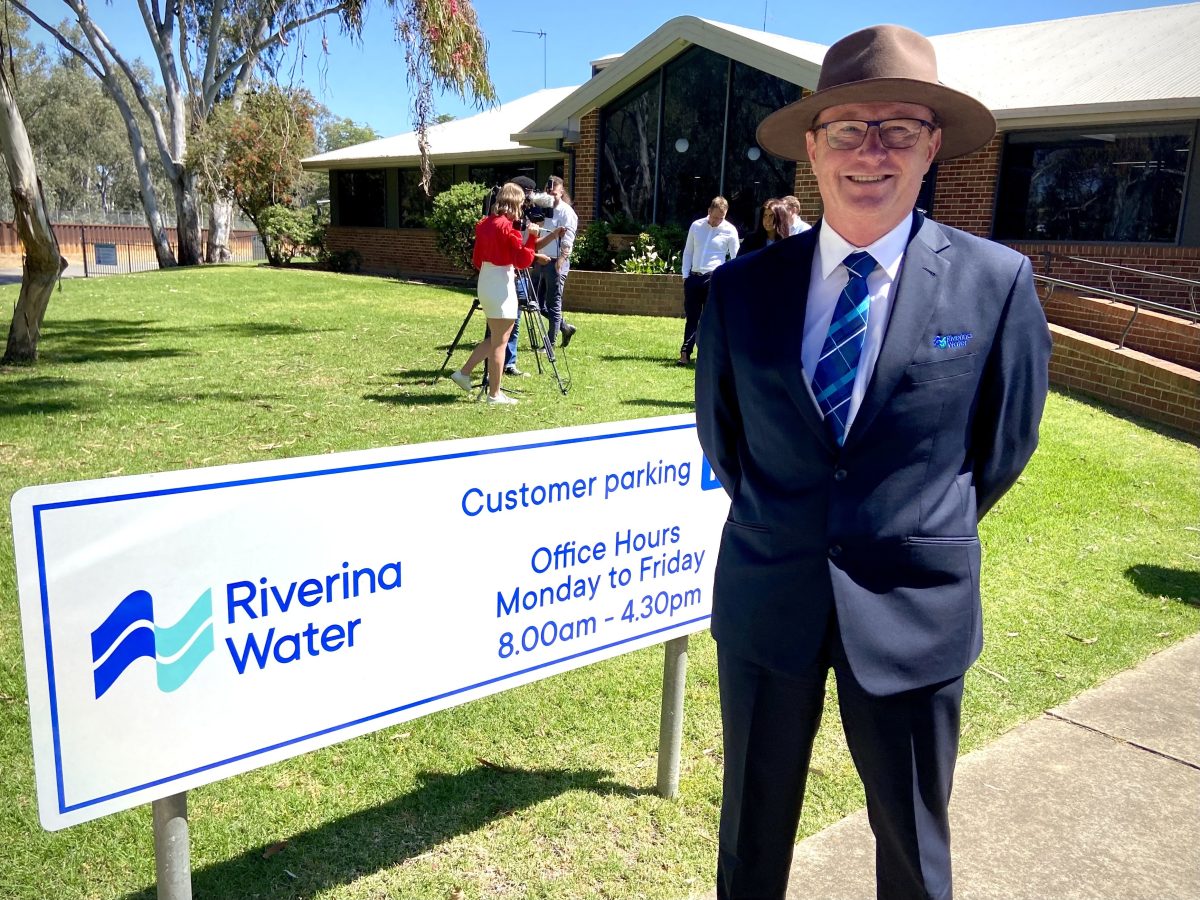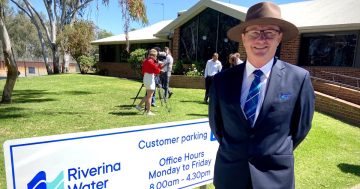
Riverina Water CEO Andrew Crakanthorp. Photo: Supplied.
There are concerns that a PFAS plume is moving through the Riverina’s groundwater and towards our bore network more rapidly than expected.
“First of all, I want to reassure everyone that our drinking water remains clean and safe to drink,” said Riverina Water CEO Andrew Crakanthorp.
“There’s no risk to your health, and there’s no cause for alarm.”
PFAS (Per- and poly-fluoroalkyl substances) refers to a group of man-made compounds that were used by Defence in firefighting products at the RAAF Base Wagga for more than 30 years.
Sometimes called the “forever chemicals”, PFAS break down extremely slowly and have been linked to poor health outcomes.
“Riverina Water has been working with Defence, who’ve been monitoring PFAS, which is known to be moving from the RAAF base here in Wagga in an easterly direction towards our East Wagga bore field,” Mr Crakanthorp explained.
“Initial modelling indicated a 50-year period before the plume … would hit the East Wagga bore field, although more recent modelling indicates that the plume may be moving more quickly than thought.”

Riverina Water’s headquarters in Wagga, tucked behind the Murrumbidgee River levy near Marshall’s Creek and Hammond Avenue. Photo: Riverina Water.
As much as 80 per cent of Wagga’s drinking water comes from the bore system, while the remaining 20 per cent comes from the treatment of river water.
The bore field at East Wagga currently supplies about 30 per cent of the region’s water.
Mr Crakanthorp said more modelling was needed to understand the changing impact on groundwater, but all the bores in the region had been tested.
“All sites have negative results, with the exception of one bore in our West Wagga bore field with a very low reading within the Australian drinking-water guidelines [ADWG].
“That bore hasn’t been in production during winter and will remain out of production for the foreseeable future.
“We’re further working with Defence to investigate the rate of movement of the plume.”
Ultimately, Mr Crakanthorp said, there were few measures to contain PFAS beyond removing the source of the contamination.
“As it approaches our East Wagga bore field, we, in reality, will have to identify new locations for new bores to continue to source the water from the aquifers,” he said.
“Should that testing indicate results that exceed [ADWG], then we shut the whole field down and we have to have plans in place, which could take a couple of years, to identify the new sites for the bores, construct them, connect the pipework to bring the water back to this site for treatment.”
In May, some Wagga residents secured a portion of a $132.7 million settlement with the Commonwealth as part of a national class action over several alleged instances of PFAS leaking into local water supplies.
Shine Lawyers represented some 30,000 claimants in the class action from Wagga and Richmond in NSW, Bullsbrook in Western Australia, Wodonga/Bandiana in Victoria, Edinburgh in South Australia, Darwin in the Northern Territory and Townsville in Queensland.
The plaintiffs were to argue that the contamination had affected property values in each region, but the confidential settlement avoided the need for a full trial.
Despite the contamination in East Wagga moving more quickly than predicted, Mr Crakanthorp reiterated that safe drinking water and maintaining the trust of customers were paramount for Riverina Water.
“We’ve got 35,000 connections with 80,000 people drinking our water, and we are not concerned that there will be any impact to human health,” he said.
You can keep up with the latest on PFAS in the Riverina here.









